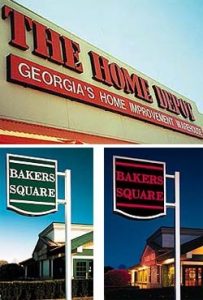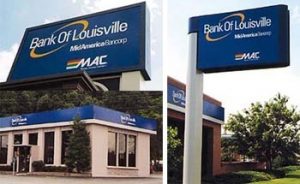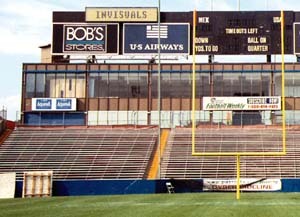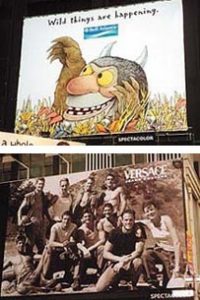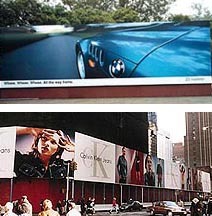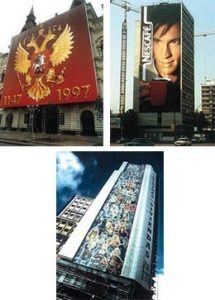There’s an old maxim deriving from Hebrew scripture that says, "Let a man at all times be supple as a reed and not rigid as a cedar." This little pearl of wisdom places value on flexibility, a quality that sums up strength, pliability, the capacity to bend over backwards just to get the job done. That idea is represented in the sign-making business as well, in the form of flexible-face materials.
First introduced in the mid-1970s as an alternative to acrylic, polycarbonate and other rigid substrates, flexible-face was designed as a hybrid material composed of a vinyl surface sheet bonded to a polyester backing or scrim. This kind of composition offered seamlessness, took up less storage space, and was more resistant to blow-outs than rigid material.
Over the years, flexible-face has steadily evolved, thanks to R&D by manufacturers such as 3M Industrial Adhesives & Tapes Div., St. Paul, MN, Cooley Sign & Digital Products, Pawtucket, RI, and Signtech, San Antonio, TX. These companies produced variations on gauge, tear strength and bonding method. Some manufactured the material by casting, the same technique often used in making pressure-sensitive marking film. Others chose extrusion, a high-temperature process that permanently bonds the scrim and vinyl. As a result of these developments, flexible-face materials demonstrated progressively better outdoor weathering performance, easier cleaning, and the versatility to accept an array of decoration techniques.
In the early days of flexible-face, imaging methods were limited. Painting was the most common practice. Other options included cold transfer, a method using pressure-sensitive, adhesive-backed vinyl; and heat transfer, a process in which thin, dry-pigmented vinyl ink is melded with a heated, flexible material.
Gradually, the decorative gamut expanded. Automated large-format screen-printing presses can now yield decorated, full-color faces. Another technique, the eradication process, involves specially formulated ink applied to continuous-roll flexible-face material. This allows easy removal of ink from a masked fabric surface to create white graphics. Then, colored, translucent vinyl may be laid over the white.
Today, with the digital-printing revolution in full swing, fabricators can use inkjet and electrostatic machines to generate four-color computer graphics directly onto flexible material. Digital hardware has improved as well. Increased resolution and sharper images means flexible-face projects don’t have to be formatted in billboard-sized applications; they can come in all shapes and sizes, and can be used in an array of forums. This versatility provides end-users with "pop," the kind of eye-catching appeal that can help snag customers who are humming through an increasingly active visual landscape.
Now, as developments in both durability and visual appeal begin to coalesce, the market has expanded, and demand for flexible-face materials seems to be reaching critical mass.
According to Dr. Adel F. Dimian, 3M’s marketing manager of architectural and sign graphics, once customers begin to recognize the durability of flexible-face media, they’ll realize that the value of their signage extends beyond the price of materials, and will demand high-impact visuals as well.
Dr. Dimian sums it up thusly: "As one of our sales reps says, ‘The sign face is 10 percent of the total sign cost, but 100 percent of the image.’"
Says Hans Schwieger, marketing sales manager of Cooley Sign Systems, "We see the opportunity to convert more rigid-face signs to flex over the years. As direct print technology becomes more durable, four-color flexible-face will start to take over conventional methods. This will be the next explosion."
The following case studies exemplify the powerful presence flexible-face commands in today’s sign-making industry, both nationally and worldwide.
3M Commercial Graphics
3M Commercial Graphics Division, St. Paul, is one of the forefathers of flexible substrates for the sign industry. According to Dimian, 3M first introduced flexible materials in 1975, with an eye toward improving outdoor durability.
But don’t think the company’s long history means it’s content to rest on its laurels. 3M’s R&D philosophy is as innovative now as it was then.
Check out the following examples of the company’s Panaflex



 Paula Fargo2 weeks ago
Paula Fargo2 weeks ago
 Real Deal1 week ago
Real Deal1 week ago
 Photo Gallery2 weeks ago
Photo Gallery2 weeks ago
 Projects1 week ago
Projects1 week ago
 News1 day ago
News1 day ago
 Business Management1 week ago
Business Management1 week ago
 Projects17 hours ago
Projects17 hours ago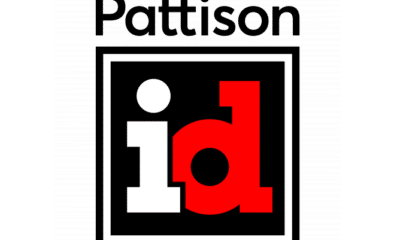
 News1 week ago
News1 week ago
